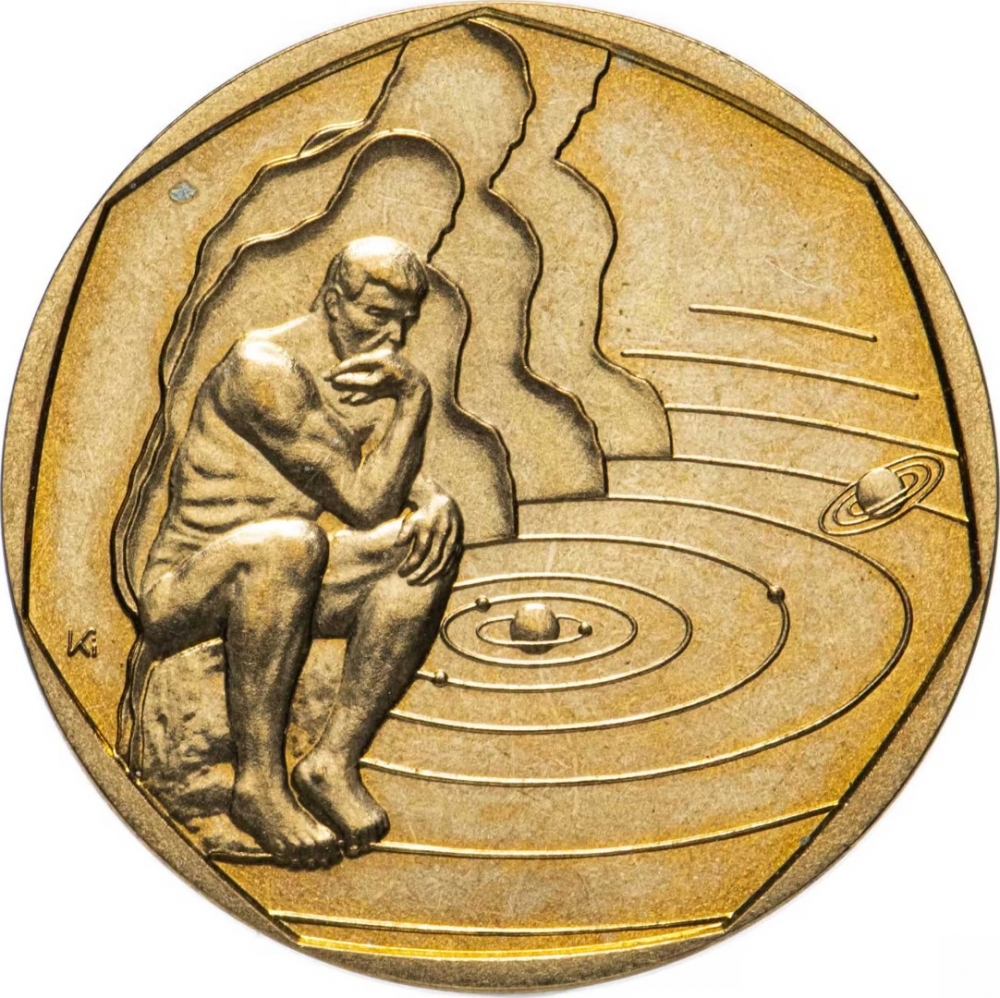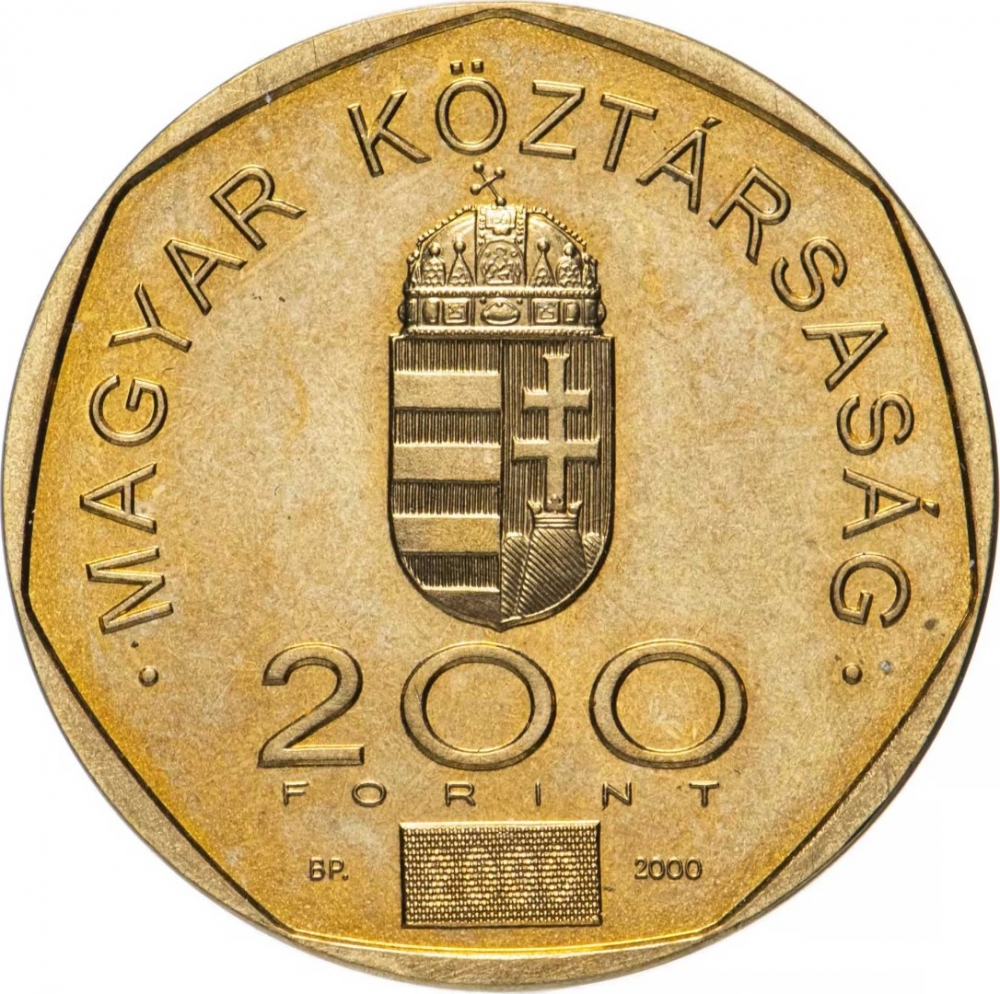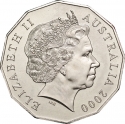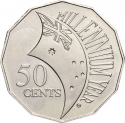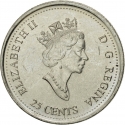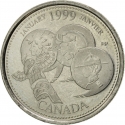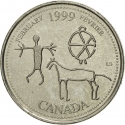You are about to finish your registration. Please check your mailbox (including spam folder). There should be a letter with a confirmation link. Check setting to make sure that your e-mail address is correct.
Send letter againDescription
Engraver: István Kósa
Obverse

|
Depicts a male figure reminiscent of Rodin's "The Thinker," with a symbolic representation of the Solar System. The contour of the male figure is repeated three times in a shadow-like manner. The engraver's privy mark is placed on the left side of the sculpture. Ki |
|---|---|
Reverse

|
The coat of arms of the Republic of Hungary is depicted. Below the coat of arms, the denomination and the inscription "FORINT" are visible in two rows. At the bottom left, the mint mark is displayed, while in the center, within a rectangular hologram field, the year "2000" is shown. On the right side, the issue year can be seen. At the top, the country name (Hungarian Republic) is visible in a semi-circular arrangement. MAGYAR KÖZTÁRSASÁG |
| Edge |
